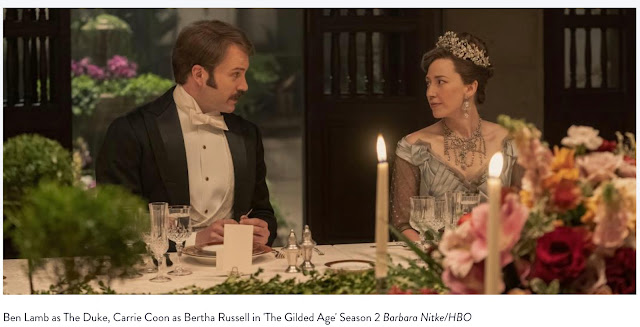As regards the most correct style of dinner-table decorations they offer great diversity of arrangement.
High centre pieces, and low centre pieces. Low specimen glasses placed the length of the table and trails of creepers and flowers laid on the table-cloth itself are some of the prevailing features of the day, but table decorations are essentially a matter of taste rather than of etiquette, and the extent of these decorations depends very much upon the size of the plate chest, and the length of the purse of the dinner giver.
The fruit for dessert is usually arranged down the centre of the table, amidst the flowers and plate. Some dinner-tables are also adorned with a variety of French conceits besides fruit and flowers ; other dinner-tables are decorated with flowers and plate only, the dessert not being placed on the table at all; but this latter mode can only be adopted by those who can make a lavish display of flowers and plate in the place of fruit.
For the purposes of lighting, lamps or silver candelabra with wax candles are used, according to the wealth of the dinner giver. Both lamps and candles are usually shaded with coloured shades, as they produce a pretty effect, and prevent the guests being incommoded by too close a proximity to the glare occasioned by some dozens of candles or by brilliant lamps, therefore shades are considered indispensable.
Electric light and electric lamps are now greatly the fashion, and offer many advantages.
The term “cover” signifies the place laid at table for each person, and the menu cards are elaborate or simple, accord- ing to individual taste, and are purchased printed for the purpose, having a space for the names of the dishes to be filled in, which is usually done by the mistress of the house, unless the establishment is on a large scale, it being usual to write them out in French.
Fanciful menu holders are much in use.
The use of menu would be pretentious at a small dinner- party when there is but little choice of dishes; but when there is a choice of dishes a menu is indispensable. — From “Manners and Rules of Good Society or Solecisms to be Avoided,” 1898
The fruit for dessert is usually arranged down the centre of the table, amidst the flowers and plate. Some dinner-tables are also adorned with a variety of French conceits besides fruit and flowers ; other dinner-tables are decorated with flowers and plate only, the dessert not being placed on the table at all; but this latter mode can only be adopted by those who can make a lavish display of flowers and plate in the place of fruit.
For the purposes of lighting, lamps or silver candelabra with wax candles are used, according to the wealth of the dinner giver. Both lamps and candles are usually shaded with coloured shades, as they produce a pretty effect, and prevent the guests being incommoded by too close a proximity to the glare occasioned by some dozens of candles or by brilliant lamps, therefore shades are considered indispensable.
Electric light and electric lamps are now greatly the fashion, and offer many advantages.
The term “cover” signifies the place laid at table for each person, and the menu cards are elaborate or simple, accord- ing to individual taste, and are purchased printed for the purpose, having a space for the names of the dishes to be filled in, which is usually done by the mistress of the house, unless the establishment is on a large scale, it being usual to write them out in French.
Fanciful menu holders are much in use.
The use of menu would be pretentious at a small dinner- party when there is but little choice of dishes; but when there is a choice of dishes a menu is indispensable. — From “Manners and Rules of Good Society or Solecisms to be Avoided,” 1898
🍽Etiquette Enthusiast, Maura J. Graber, is the Site Editor for the Etiquipedia© Etiquette Encyclopedia

No comments:
Post a Comment
Note: Only a member of this blog may post a comment.